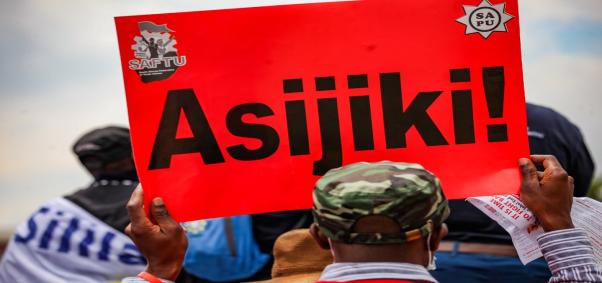
22 October 2015 – A new paper from the New Climate Economy recommends that Parties to the Montreal Protocol approve an amendment to phase down Hydrofluorocarbons (HFCs), a fast mitigation action that could avoid the equivalent of up to 200 billion tonnes of carbon dioxide by 2050, and up to 0.5°C of warming by the end of the century. By 2030, the HFC amendment could avoid 1.7 Gt CO2 equivalent of greenhouse gas emissions per year, more than the current annual emissions of Japan.
The paper, Phasing down the use of hydrofluorocarbons (HFCs), comes on the heels of a suite of new measures to reduce HFCs announced by US President Barack Obama on October 15, following earlier bilateral efforts to limit HFCs by the US and China. The paper suggests that countries not already working to phase down HFCs begin developing domestic HFC regulations while also improving energy efficiency.
According to the paper, phasing down HFCs, which are coolants found primarily in refrigerators and air conditioners, is economically attractive as well. Replacing them with greener alternatives has low upfront costs and can improve energy efficiency by as much as 50% or more. Coca-Cola, for example, has installed 1 million HFC-free coolers as of January, 2014, and reports a 40% improvement in energy efficiency since 2000. Automakers have found that any upfront costs of alternative refrigerants in motor vehicles are outweighed by annual savings on fuel costs.
“Today’s report indicates that an important part of winning the climate challenge is winning the battle against HFCs, which can provide one of the biggest, fastest pieces of climate mitigation in the near-term,” said Durwood Zaelke, President of the Institute for Governance & Sustainable Development and a paper co-author. “The 200 billion tonnes of avoided CO2 emissions this strategy can deliver is critical for reducing the most punishing climate impacts, including sea-level rise.”
HFCs are the fastest growing greenhouse gasses in much of the world, increasing at a rate of 10 to 15 percent per year. They are short-lived climate pollutants because they remain in the atmosphere for 15 years or less, but have a global warming potential often thousands of times more powerful than CO2. Other short-lived climate pollutants include methane gas, black carbon particles from dirty diesels, and tropospheric ozone, which is the main component of smog. Many expert groups, including the Climate and Clean Air Collation (CCAC) calculate that reducing short-lived climate pollutants must go hand in hand with cuts to CO2 and other long-lived greenhouse gases in order to stay below the 2°C warming limit.
The paper identifies the Montreal Protocol as a cost-effective and established pathway for reducing HFCs, recognizing that the global treaty has already successfully phased out nearly 100 chemicals similar to HFCs, and has been accepted by 197 countries, making it the only UN treaty with universal ratification.
“Phasing down HFCs today is technically feasible, economically attractive, and environmentally responsible,” stated paper co-author Maxime Beaugrand. “We are increasingly optimistic that the world will agree at the Meeting of the Parties the first week of November to start a global phase-down of HFCs.”
“The global consensus on reducing HFCs is reaching a tipping point,” said Michael Jacobs, Senior Adviser to the New Climate Economy. “An amendment to include HFCs in the Montreal Protocol will yield dramatic environmental benefits and catalyze the international phase down of HFCs at a low cost.”
Support for the amendment is rapidly growing with 95 countries having submitted formal proposals to phase down HFCs through an amendment to the Montreal Protocol. Many other countries, including China and Brazil have agreed with President Obama to support the HFC amendment. The final Meeting of the Parties this year will be in the United Arab Emirates 1 to 5 November 2015.
-ENDS-
Notes to Editors:
Phasing down the use of hydrofluorocarbons (HFCs) is a supporting paper for the Global Commission on the Economy and Climate’s 2015 report, Seizing the Global Opportunity: Partnerships for Better Growth and a Better Climate. The report can be found at http://2015.newclimateeconomy.report/wp-content/uploads/2015/10/Phasing-down-HFCs_final_web.pdf. IGSD’s Primer on HFCs is available here.
The New Climate Economy is the flagship project of the Global Commission on the Economy and Climate. It was established by seven countries: Colombia, Ethiopia, Indonesia, Norway, South Korea, Sweden and the United Kingdom, as an independent initiative to examine how countries can achieve economic growth while dealing with the risks posed by climate change.
Chaired by former Mexican President Felipe Calderón, and co-chaired by renowned economist Lord Nicholas Stern, the Commission comprises 28 leaders from 20 countries, including former heads of government and finance ministers, heads of international organisations, leading business people, investors, city mayors and economists.
Research for the Commission has been carried out by a partnership of leading global economic and policy institutes, including the World Resources Institute (Managing Partner), the Climate Policy Initiative, the Ethiopian Development Research Institute, the Global Green Growth Institute, Indian Council for Research on International Economic Relations, the Overseas Development Institute, the Stockholm Environment Institute and Tsinghua University.
For more information go to www.newclimateeconomy.net
Photo credit: ValeStock / Shutterstock.com
For media inquiries contact:
Durwood Zaelke zaelke@inece.org, (202) 498-2457
Katie Fletcher kfletcher@igsd.org, (202) 338-1300
Ferzina Banaji ferzina.banaji@newclimateeconomy.net
Joel Jaeger, joel.jaeger@newclimateeconomy.net






